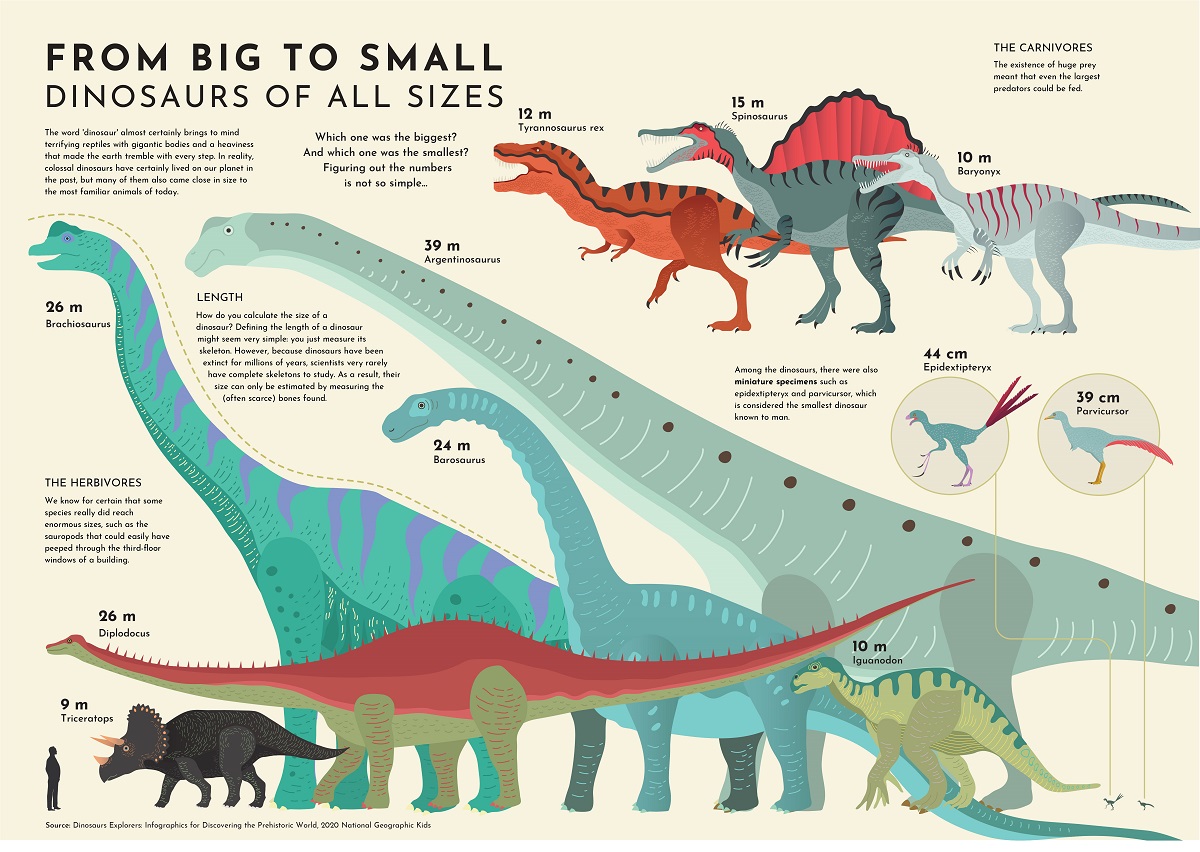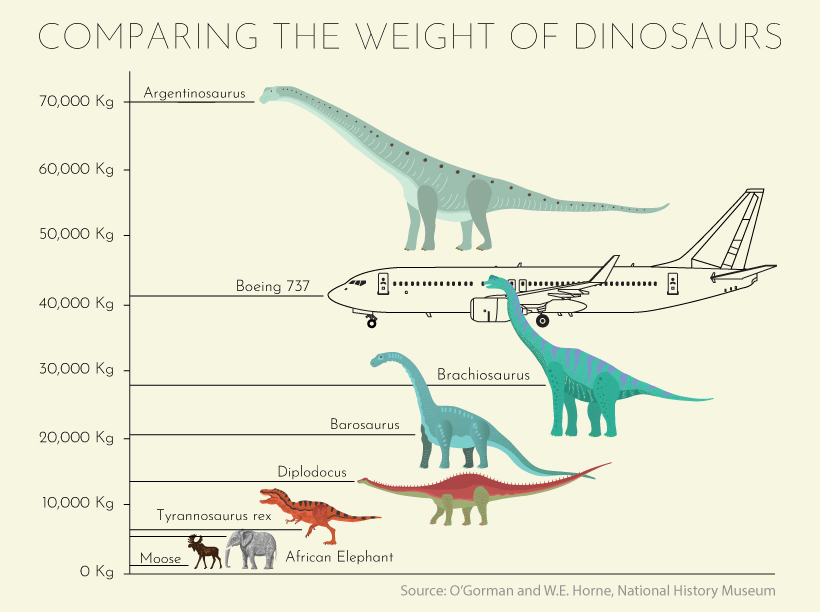
Click to view a larger version of the graphic.
Comparing the Sizes of Dinosaurs in the Lost World
When dinosaurs inhabited the Earth over 66 million years ago, their sizes and species varied dramatically.
While geological evidence is far from complete, fossil evidence suggests that the largest dinosaurs were comparable to the length of a Boeing 737 or the weight of 12 elephants. Meanwhile, the smallest were similar to the size of a chicken or bird.
In this infographic from Giulia De Amicis we compare the sizes of dinosaurs to get a sense of their vast scale and diversity.
Sizes of Dinosaurs Compared to Modern Day Life
Towering as high as 39 meters, the Argentinosaurus or ‘Argentina lizard’ is currently thought to be the largest dinosaur ever discovered. It was a sauropod, a subgroup of dinosaurs with very long necks and long tails, four wide legs for support, and relatively smaller heads.
In 1987, its bones were unearthed in the Patagonia region of Argentina, a destination well-known for prehistoric fossils. For comparison’s sake, the length of the Argentinosaurus is as high as a 13-story building.
| Name | Length (Meters) | Length (Feet) |
|---|---|---|
| Argentinosaurus | 39 m | 128 ft |
| Blue Whale | 30 m | 98 ft |
| Brachiosaurus | 26 m | 85 ft |
| Diplodocus | 26 m | 85 ft |
| Barosaurus | 24 m | 79 ft |
| Spinosaurus | 15 m | 49 ft |
| Tyrannosaurus rex | 12 m | 30 ft |
| Iguanodon | 10 m | 33 ft |
| Baryonyx | 10 m | 33 ft |
| Triceratops | 9 m | 30 ft |
| African Elephant | 7 m | 23 ft |
| Human | 1.8 m | 6 ft |
| Epidextipteryx | 44 cm | 1.4 ft |
| Parvicursor | 39 cm | 1.3 ft |
Other sauropods were also massive, including the Brachiosaurus, or ‘arm lizard’—it was roughly the size of a blue whale.
Fossil evidence discovered in 1900 in the Colorado Valley showed that the Brachiosaurus lived in the late Jurassic Period, 140-155 million years ago. Similarly, the Tyrannosaurus rex (12 m) also lived in North America, but during the Late Cretaceous period some 80 million years later.
Among the smallest dinosaurs were the Parvicursor (literally ‘small runner’) and Epidextipteryx (literally ‘display feather’). Both were under 45 centimeters, similar to a modern mid-sized bird.
The Age of Giants
Not only were the dinosaurs sheerly colossal in size, but so too was their mass.

Consider how the Argentinosaurus was about the weight of a typical rocket at 75,000 kg, or twice the mass of a Boeing 737. And there were many heavy dinosaurs, such as the Diplodocus (meaning ‘double beam’) which weighed a hefty 13,000 kg.
Sizes of Dinosaurs In Question
How do we know these sizes and weights?
Scientists use discovered bones, impressions, and completed fossils to come up with ranges of estimates. The more complete a fossil and the more similar fossils exist, the more accurate the estimate that scientists can make.
But amid discoveries of the largest dinosaurs on earth, many paleontologists have questioned size claims. Due to incomplete fossil records, some estimates are based on as little as a handful of bone records. For instance, just 20% of the Brachiosaurus’ skeleton has been discovered.
At the same time, techniques such as 3-D scanning continue to be refined, and there are now many different techniques being used to estimate size. That said, one study has shown that even diverse sizing techniques typically arrive at similar results.
With access to virtual fossils, broad archeological datasets, as well as advancing techniques and new discoveries, the understanding of the sizes of dinosaurs continues to evolve.
The post Comparing the Sizes of Dinosaurs in the Lost World appeared first on Visual Capitalist.